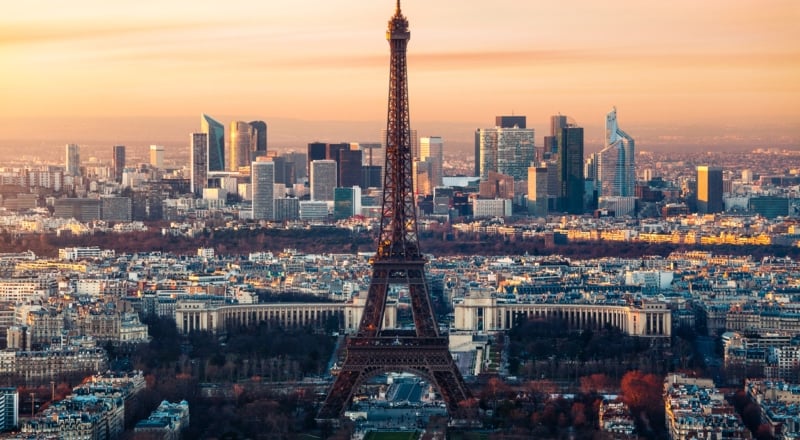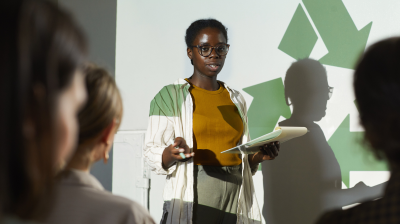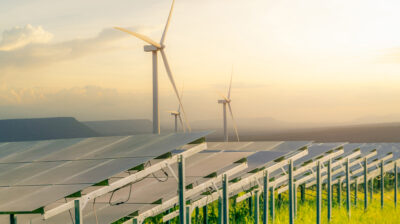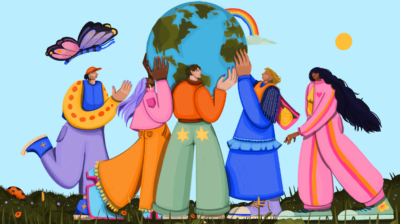What is the Paris Climate Agreement?
Learn about the role of the UN in tackling climate change and if the targets are enough

Climate change is one of the biggest threats facing humanity today. Action needs to be taken, and fast, in order to address the climate crisis and ensure a safe and secure existence for future generations.
Over the past century, global warming has caused the planet to heat up by 1° Celsius on average – a figure that may not seem very high, but has actually had a significant impact on the environment.
While it’s important that we all do what we can to reduce our carbon footprint, it’s governments and big corporations who need to take the biggest steps and lead the way towards tackling climate change.
One of the ways we can pressure our governments is by asking them to make efforts to fall in line with the Paris Agreement, but what is the Paris Agreement, and will it work?
The role of the United Nations (UN) in tackling climate change
Over the last 30 years the UN, an international forum through which national leaders come together to discuss global issues, has played a significant role in taking action against climate change. Since 1992, several agreements have been reached to try and combat climate change and reduce the greenhouse gas emissions that are heating up the planet.
United Nations Framework Convention on Climate Change (UNFCCC)
In 1992, an environmental treaty (an international agreement) called the United Nations Framework Convention on Climate Change (UNFCCC) was negotiated. The aim of the treaty was to reach an agreement between countries to limit the amount of greenhouse gas emissions in order to prevent significant damage to the climate as a result of human activity.
The treaty was legally non-binding, which means that legally, the countries do not have to carry out the promises they made under the treaty.
The Kyoto Protocol
The Kyoto Protocol, introduced in 1997, created legally binding emissions targets, but so far it has been unsuccessful in preventing global warming.
Despite these agreements, greenhouse gas emissions have continued to rise rather than fall. The United States were the only country not to ratify (sign) the Kyoto Protocol, and Canada pulled out of the protocol in 2012 because they felt it would not be possible to meet their targets, and they didn’t want to face the financial consequences. All countries apart from the US took part in the first round of commitments (2008-2012), but a number of countries (Japan, New Zealand, Russia, and Canada) have not taken on new targets in the second round of commitments (2013-2020).
The most recent agreement – the Paris Agreement – was an attempt to address the failure of past attempts.
What is the Paris Agreement?
In 2015, 195 countries met in Paris at the United Nations Climate Change Conference (COP 21) to discuss what needs to be done to lessen the impact of climate change. Countries came to the conference with their individual commitments already planned out. For example, the EU made a joint commitment to reduce greenhouse gases by 55% by the year 2030 compared to 1990 levels, and Ireland’s contribution falls under this commitment.
At the end of this conference, all members reached the Paris Agreement, which was to strengthen the global response to climate change by:
- Keeping the global temperature rise this century well below 2° Celsius above pre-industrial levels (before the Industrial Revolution when we started burning fossil fuels in factories);
- Make significant efforts to limit this temperature increase to 1.5° Celsius.
Why 2°C?
Many scientists agree that if global warming increases to 2°C above pre-industrial levels, we will have reached a tipping point. This is the point where the effects of global warming will be irreversible, and there will be no turning back. If this warming can be kept below 2°C, there is a chance the world will be able to adapt to the new climate, even if it will look different to today. This is why one of the key points in the agreement is that every effort should be made to limit the rise in temperature to 1.5°C.
What would be the difference between 1.5°C and 2°C of warming?
It may not seem like there’s a huge difference between 1.5 and 2, but research suggests that this half a degree does make a huge difference and will significantly impact the lives of current and future generations. For example, the difference in 1.5 and 2 degrees could lead to:
- Extreme heat events that are 2.6 times worse
- The amount of corn harvested will reduce by 2.3 times more
- It will be 10 times more likely that sea ice in the Arctic will melt during summers
- Coral reefs will practically be gone
- We will lose more species of animals, plants, and insects
- Ecosystems will see more damage
- Rising seawater levels will expose up to 80 million people to flooding by the end of the century
Is the Paris Agreement working?
The Paris Agreement was an ambitious plan that involves completely changing the way we live in order to save the planet. In order for it to work, everyone needs to be on board and each country needs the resources required to achieve their goals.
Some countries have developed plans to curb their emissions, such as Gambia who have taken on a massive reforestation project. However, not all countries are following through on their commitments, and at the moment, the global community is not doing enough to keep our global temperature rise below two degrees. For some countries, especially developing countries, this is because they don’t have enough money to invest in the technologies that they need. Progress has also been slowed down by leaders with conflicting political views. The US withdrew from the Paris Agreement when Donald Trump was president, but reentered the agreement under President Joe Biden.
Ireland’s performance on climate action
In 2023, the Climate Change Performance Index (CCPI) ranked Ireland 37th out of 59 countries and the European Union for climate action. With current measures in place, Ireland is still not on track to achieve its target of halving greenhouse gas emissions by 2030.
Learn more about Ireland’s performance on climate action.
What can we do?
We need to take urgent action on climate change. If you feel your leaders are not doing enough to solve the climate crisis, let them know. Lobbying politicians and companies on climate change gives you the opportunity use your voice and let them know you demand action. You can also make small steps in your own life to reduce your carbon footprint and do your part to save the planet.






